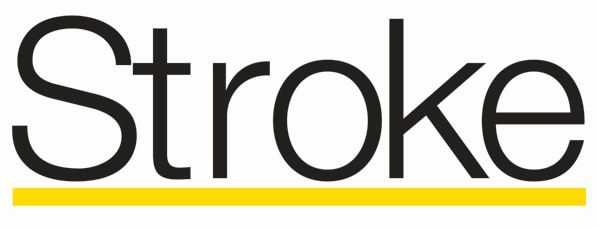Abstract and Introduction
Abstract
Background: Endovascular treatment (EVT) for acute ischemic stroke (AIS) patients presenting with National Institutes of Health Stroke Scale score of 0 to 5 is common in clinical practice but has not yet been proven safe and effective. Our objective is to assess whether EVT on top of best medical treatment (BMT) in AIS patients with large-vessel occlusion of the anterior circulation presenting with mild symptoms is beneficial compared with BMT.
Methods: We searched MEDLINE, SCOPUS, and reference lists of retrieved articles published until December 28, 2022. A systematic literature search was conducted to identify clinical trials or observational cohort studies evaluating patients with AIS due to anterior circulation large-vessel occlusion and admission National Institutes of Health Stroke Scale score ≤5 treated with EVT versus BMT alone. The primary outcome was excellent functional outcome (modified Rankin Scale score 0–1) at 3 months. The protocol had been registered before data collection (PROSPERO).
Results: Eleven observational eligible studies were included in the meta-analysis, comprising a total of 2019 AIS patients with National Institutes of Health Stroke Scale score ≤5 treated with EVT versus 3171 patients treated with BMT. EVT was not associated with excellent functional outcome (risk ratio, 1.10 [95% CI, 0.93–1.31]). When stratified for different study design (per-protocol versus intention-to-treat), there were no significant subgroup differences. EVT was not associated with good functional outcome (modified Rankin Scale score 0–2; risk ratio, 1.01 [95% CI, 0.89–1.16]) or reduced disability at 3 months (common odds ratio, 0.92 [95% CI, 0.60–1.41]). Symptomatic intracranial hemorrhage was more common in the patients receiving EVT (risk ratio, 3.53 [95% CI, 2.35–5.31]). No correlation was found between EVT and mortality at 3 months (risk ratio, 1.34 [95% CI, 0.83–2.18]). The same overall associations were confirmed in the sensitivity analysis of studies that performed propensity score matching.
Conclusions: EVT appears equivalent to BMT for patients with anterior circulation large-vessel occlusion AIS with low baseline National Institutes of Health Stroke Scale, despite the increased risk for symptomatic intracranial hemorrhage.
Registration: URL: https://www.crd.york.ac.uk/PROSPERO/; Unique identifier: CRD42022334417.
Graphic Abstract: A graphic abstract is available for this article.
Introduction
Current American Heart Association/American Stroke Association and European Stroke Organization guidelines strongly recommend endovascular treatment (EVT) for acute ischemic stroke (AIS) patients with large-vessel occlusion (LVO) and National Institutes of Health Stroke Scale (NIHSS) score of ≥6, Alberta Stroke Program Early Computed Tomography Score of ≤6, up to 6 hours from symptom onset based on high quality data (Class IA).[1,2] Real-world data suggest that 1 in 25 patients with AIS presenting in the emergency department with NIHSS score <6 harbors an underlying LVO.[3] Despite mild initial symptoms, up to 20% of these patients may deteriorate without acute recanalization therapy.[4,5] Even in transient ischemic attack patients, LVO may be recognized in up to 1 in 10 patients and predicts functional decline.[6,7] Therefore, using the term mild for a stroke with low NIHSS in the context of LVO may be misleading.[8] Nearly 1 in 4 AIS patients with LVO and minor symptoms primarily treated with best medical treatment (BMT) will not achieve functional independence at 3 months.[9] Only a minority among those treated with intravenous thrombolysis (IVT) will achieve recanalization, suggesting that IVT may not be enough.[10,11] We have previously performed a multicenter retrospective study followed with a systematic review and meta-analysis of available observational studies on patients presenting with NIHSS score of <6 and treated with EVT versus BMT for anterior circulation LVO.[12] In a pooled analysis of 251 patients, we documented no independent association between treatment groups and safety or efficacy outcomes and a nonsignificant trend toward greater risk for symptomatic intracranial hemorrhage (sICH) in the EVT group (4.4% versus 0.9% in BMT). A single-center series independently reported similar sICH rates,[13] prompting an editorial advising caution about overtreating this specific LVO subgroup with EVT.[14] Clinical registries also question the safety of EVT in unselected AIS patients with LVO presenting with minor symptoms.[15] Our previous meta-analysis received criticism for not reporting the rate of patients that were initially treated conservatively but consequently had to receive EVT due to early neurological deterioration.[16] Because rescue EVT might be performed in >10% of LVO patients with NIHSS score of <6,[17] treatment cross-over necessitates studies with an intention-to-treat (ITT) design to fully elucidate the prognosis of the BMT group. Unfortunately, we lacked data on early neurological deterioration and rescue EVT rates at the time.[18]
In view of this clinical equipoise and in the absence of randomized data, we have performed an updated systematic review and meta-analysis to evaluate the safety and effectiveness of EVT in anterior circulation LVO patients presenting with NIHSS score of <6 compared with BMT.
Stroke. 2023;54(9):2265-2275. © 2023 American Heart Association, Inc.













